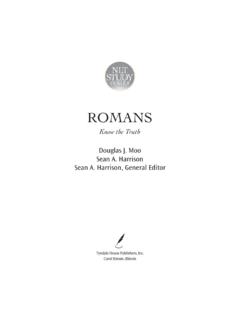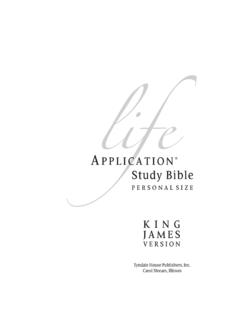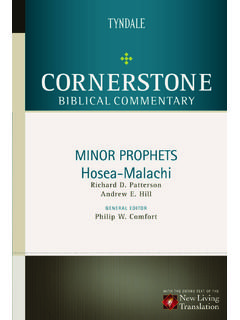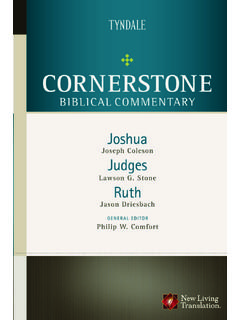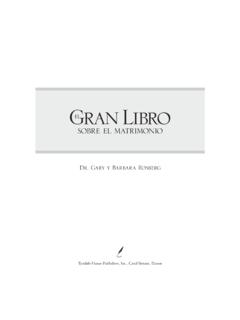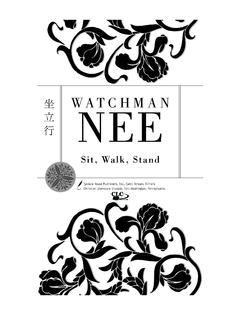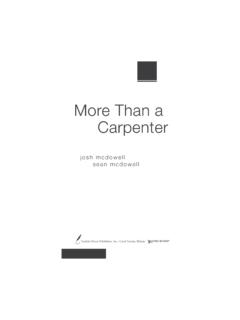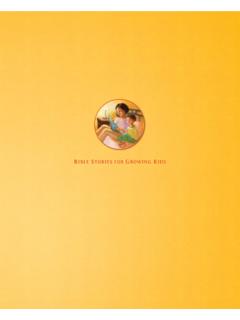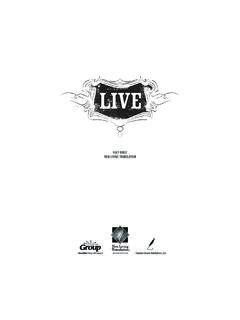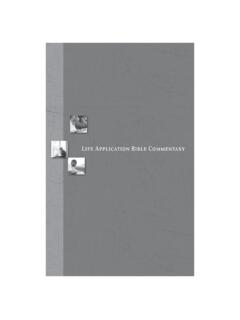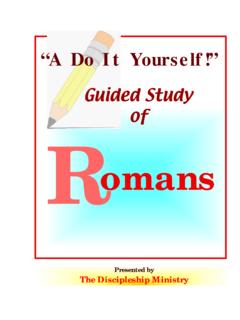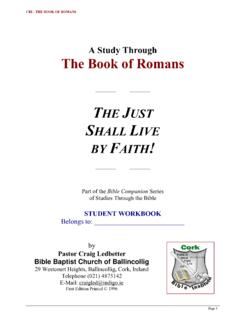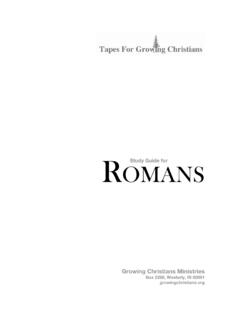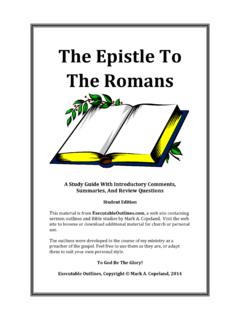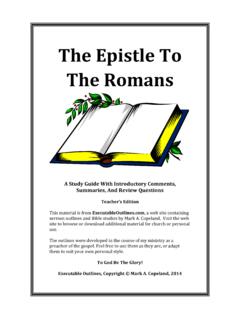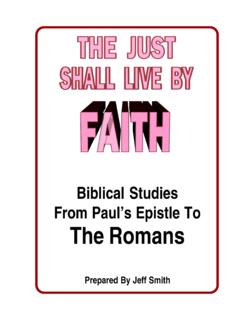Transcription of LAB Studies: Romans - Tyndale House
1 RomanslifeffffStudiesffffotes and features from theffffPart 2:Thirteen lessons for individual or group studyStudy questions written and edited byRev. Ed TrennerRev. David R. VeermanDr. James C. GalvinDr. Bruce B. BartonTyndale House Publishers, Stream, i12/22/2008 8:00:35 AM12/22/2008 8:00:35 AMVisit Tyndale s exciting Web site at Living Translation, NLT, the New Living Translation logo, and Life Application are registered trademarks of Tyndale nHouse Publishers, Application Bible studies : RomansCopyright 1998, 2009 by Tyndale House Publishers, Inc., Carol Stream, Illinois 60188. All rights Application notes and features copyright 1988, 1989, 1990, 1991, 1993, 1996, 2004 by Tyndale House Publishers,Inc., Carol Stream, Illinois 60188. Maps in text copyright 1986, 1988 by Tyndale House Publishers, Inc. All photograph copyright by Radius Images/Jupiterimages.
2 All rights text of Romans is from theHoly Bible, New Living Translation, copyright 1996, 2004, 2007 by Tyndale House Foun-dation. All rights text of the Holy Bible,New Living Translation, may be quoted in any form (written, visual, electronic, or audio) up toand inclusive of fi ve hundred (500) verses without express written permission of the publisher, provided that the versesquoted do not account for more than 25 percent of the work in which they are quoted, and provided that a completebook of the Bible is not the Holy Bible, New Living Translation, is quoted, one of the following credit lines must appear on the copyright page or title page of the work:Scripture quotations are taken from theHoly Bible, New Living Translation, copyright 1996, 2004, 2007 byTyndale House Foundation. Used by permission of Tyndale House Publishers, Inc., Carol Stream, Illinois 60188. All rights otherwise indicated, all Scripture quotations are taken from theHoly Bible, New Living Translation, copyright 1996, 2004, 2007 by Tyndale House Foundation.
3 Used by permission of Tyndale House Publishers, Inc., Carol Stream, Illinois 60188. All rights quotations marked NLT are taken from theHoly Bible, New Living Translation, copyright 1996, 2004,2007 by Tyndale House Foundation. Used by permission of Tyndale House Publishers, Inc., Carol Stream, Illinois 60188. All rights quotations from the NLT text are used in nonsalable media, such as church bulletins, orders of service, news-let ters, transparencies, or similar media, a complete copyright notice is not required, but the initials NLT must appearat the end of each in excess of fi ve hundred (500) verses or 25 percent of the work, or other permission requests, must be approved in writing by Tyndale House Publishers, Inc. Send requests by e-mail to: or call 630-668-8300, ext. of any commentary or other Bible reference work produced for commercial sale that uses the New LivingTranslation requires written permission for use of the NLT 978-1-4143-2563-7 Printed in the United States of America15 14 13 12 11 10 097 6 5 4 3 2 ii12/22/2008 8:00:46 AM12/22/2008 8:00:46 AMCONTENTSvii A Note to Readersiix Introduction to the New Living Translationxxv Why the vLife Application study BibleIs Uniqueexvii What Is Application?
4 Ixix Features of thexLife Application study Bible2 Romans from the 2 Life Application study Bible39 How to Use This Bible study 941 Lesson 1:The Gospel at the CrossroadsRomans 1:1-1745 Lesson 2:5 Whatever Became of Sin? Romans 1:18 2:1649 Lesson 3:9 Not Guilty! Romans 2:17 3:3153 Lesson 4:3 Abraham, a Model of FaithRomans 4:1-2557 Lesson 5:7 Finding Peace with GodRomans 5:1-2161 Lesson 6:Free to Choose LifeRomans 6:1-2365 Lesson 7:5 Losing Sight of the VictoryRomans 7:1-2569 Lesson 8:9 The Key to Confi dent LivingRomans 8:1-3973 Lesson 9:3 Searching for God and Missing JesusRomans 9:1 11:3677 Lesson 10:7 Becoming a Living Sacrifi ceRomans 12:1-2181 Lesson 11:Controlled by LoveRomans 13:1-1485 Lesson 12:5 Living for Each OtherRomans 14:1 15:1389 Lesson 13:9 Partners in the GospelRomans 15:14 16:27 iii12/22/2008 8:00:46 AM12/22/2008 8:00:46 AMA NOTE TO READERSThe Holy Bible,New Living Translation, was first published in 1996.
5 It quickly becameone of the most popular Bible translations in the English-speaking world. While the NLT sinfluence was rapidly growing, the Bible Translation Committee determined that an addi-tional investment in scholarly review and text refinement could make it even better. Soshortly after its initial publication, the committee began an eight-year process with thepurpose of increasing the level of the NLT s precision without sacrificing its easy-to-understand quality. This second-generation text was completed in 2004 and is reflectedin this edition of the New Living Translation. An additional update with minor changeswas subsequently introduced in goal of any Bible translation is to convey the meaning and content of the ancientHebrew, Aramaic, and Greek texts as accurately as possible to contemporary readers. Thechallenge for our translators was to create a text that would communicate as clearly andpowerfully to today s readers as the original texts did to readers and listeners in the ancientbiblical world.
6 The resulting translation is easy to read and understand, while also accu-rately communicating the meaning and content of the original biblical texts. The NLT is ageneral-purpose text especially good for study , devotional reading, and reading aloud inworship believe that the New Living Translation which combines the latest biblical scholar-ship with a clear, dynamic writing style will communicate God s word powerfully to allwho read it. We publish it with the prayer that God will use it to speak his timeless truthto the church and the world in a fresh, new PublishersOctober v12/22/2008 8:00:46 AM12/22/2008 8:00:46 AMINTRODUCTION TO THENEW LIVING TRANSLATIONT ranslation Philosophy and MethodologyEnglish Bible translations tend to be governed by one of two general translation theories. The first theory has been called formal-equivalence, literal, or word-for-word trans-lation.
7 According to this theory, the translator attempts to render each word of the original language into English and seeks to preserve the original syntax and sentence structure as much as possible in translation. The second theory has been called dynamic-equivalence, functional-equivalence, or thought-for-thought translation. The goal of this translation theory is to produce in English the closest natural equivalent of the message expressed by the original-language text, both in meaning and in of these translation theories have their strengths. A formal-equivalence translation preserves aspects of the original text including ancient idioms, term consistency, and original-language syntax that are valuable for scholars and professional study . It allows a reader to trace formal elements of the original-language text through the English trans-lation.
8 A dynamic-equivalence translation, on the other hand, focuses on translating the message of the original-language text. It ensures that the meaning of the text is readily ap-parent to the contemporary reader. This allows the message to come through with immedi-acy, without requiring the reader to struggle with foreign idioms and awkward syntax. It also facilitates serious study of the text s message and clarity in both devotional and public pure application of either of these translation philosophies would create translations at opposite ends of the translation spectrum. But in reality, all translations contain a mixture of these two philosophies. A purely formal-equivalence translation would be unintelligible in English, and a purely dynamic-equivalence translation would risk being unfaithful to the original. That is why translations shaped by dynamic-equivalence theory are usually quite literal when the original text is relatively clear, and the translations shaped by formal- equivalence theory are sometimes quite dynamic when the original text is translators of the New Living Translation set out to render the message of the original texts of Scripture into clear, contemporary English.
9 As they did so, they kept the concerns of both formal-equivalence and dynamic-equivalence in mind. On the one hand, they trans-lated as simply and literally as possible when that approach yielded an accurate, clear, and natural English text. Many words and phrases were rendered literally and consistently into English, preserving essential literary and rhetorical devices, ancient metaphors, and word choices that give structure to the text and provide echoes of meaning from one passage to the the other hand, the translators rendered the message more dynamically when the literal rendering was hard to understand, was misleading, or yielded archaic or foreign word-ing. They clarified difficult metaphors and terms to aid in the reader s understanding. The translators first struggled with the meaning of the words and phrases in the ancient context; then they rendered the message into clear, natural English.
10 Their goal was to be both faithful to the ancient texts and eminently readable. The result is a translation that is both exegeti-cally accurate and idiomatically Process and TeamTo produce an accurate translation of the Bible into contemporary English, the translation team needed the skills necessary to enter into the thought patterns of the ancient authors and then to render their ideas, connotations, and effects into clear, contemporary English. vii12/22/2008 8:00:46 AM12/22/2008 8:00:46 AMINTRODUCTION TO THE NEW LIVING TRANSLATION viiiTo begin this process, qualified biblical scholars were needed to interpret the meaning of the original text and to check it against our base English translation. In order to guardagainst personal and theological biases, the scholars needed to represent a diverse group of evangelicals who would employ the best exegetical tools.
